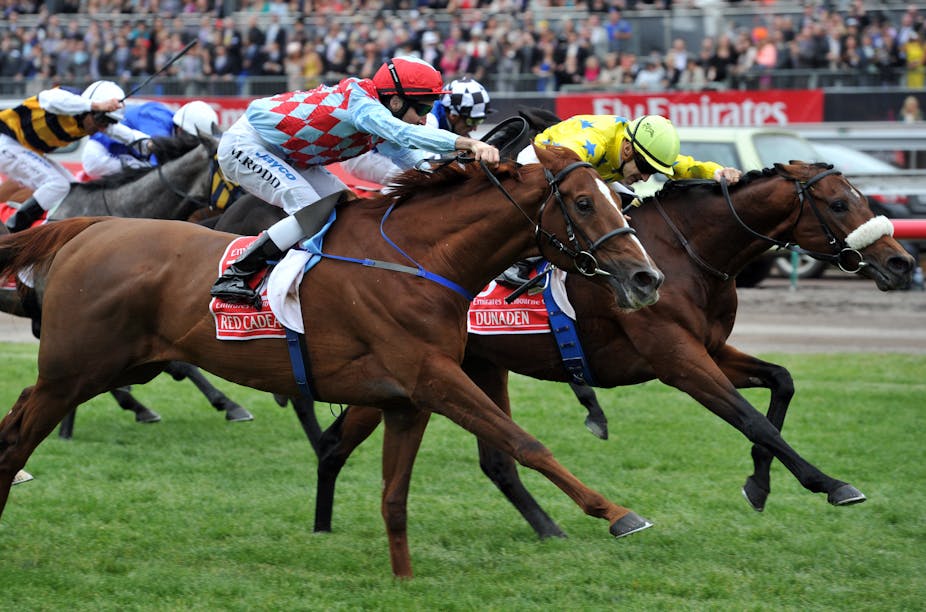When a race is as prominent as the Melbourne Cup, betting is far from the preserve of wizened, semi-alcoholic, rollie-smoking, form guide-reading wager junkies.
But do the relatively uninformed bets of the (washed) masses skew the odds, and thus open up lucrative opportunities for those in the know?
And how can Information Technology predict winners?
The value of inside information
Edward Lidums, Lecturer, School of Mathematical Sciences, University of Technology, Sydney
I would assume that most of the uninformed money would be going towards favourites which means that the odds for the favourites would be dropping so if the favourites do win the informed punter will get a lower return than otherwise.
The only thing is that if a non-favourite wins, presumably their odds might be higher. Because the uninformed would be putting money on the favourite, driving those down and not affecting the outsiders.
That’s the only way you could possibly benefit: to have the mug punters betting on the favourite.
Publicity is not a bad thing for the astute punter if publicity gets all the money towards the favourite, and the outside chance wins.
Inside information is of assistance in any market, which is why insider trading is banned in the stock market.
It’s not banned in gambling because in horse racing there are just so many different variables at play that the suggestion of money going from a mug punter is only one of a large number of different factors influencing the market.
There’s [also] the sheer physicality of the horses and whether a horse is a very good performer. But it could have an off day.
Using data mining and predictive technologies to overcome the variables and win
Richi Nayak, Associate Professor, Faculty of Science and Technology, Queensland University of Technology
In a manner very similar to the stock market, it [race results] can be predicted.
There have to be very sophisticated techniques of data analysis because you need to predict as it happens.
Usually in the stock market the data is recorded electronically - the number of stocks purchased and the number of stocks sold are always recorded.
But in the horse trading what happens on the field or on the track needs to be recorded on time, and that information needs to be interfaced with the data analysis of data mining software to make the real time prediction.
These kinds of systems analyse the historical information. Every year when the Melbourne Cup happens it could be a scenario where all the possible values, all the variables, that affect the race and it’s outcome are being recorded.
We would collect all possible details about the horse, what the ranking was for that horses, so now the data mining software would try to find out the relationship between the attributes of the variables that we have collected about the race, the horses, and the environmental detail, the ground detail, today’s weather, so all those details are recorded and combined with the historical data.
So now we know what the ranking is for a particular horse.
The Australian Cricket Board has used data mining for cricket prediction. They record how players perform during a match and what were the circumstances, to then predict who would be the best one to select for the next match.

